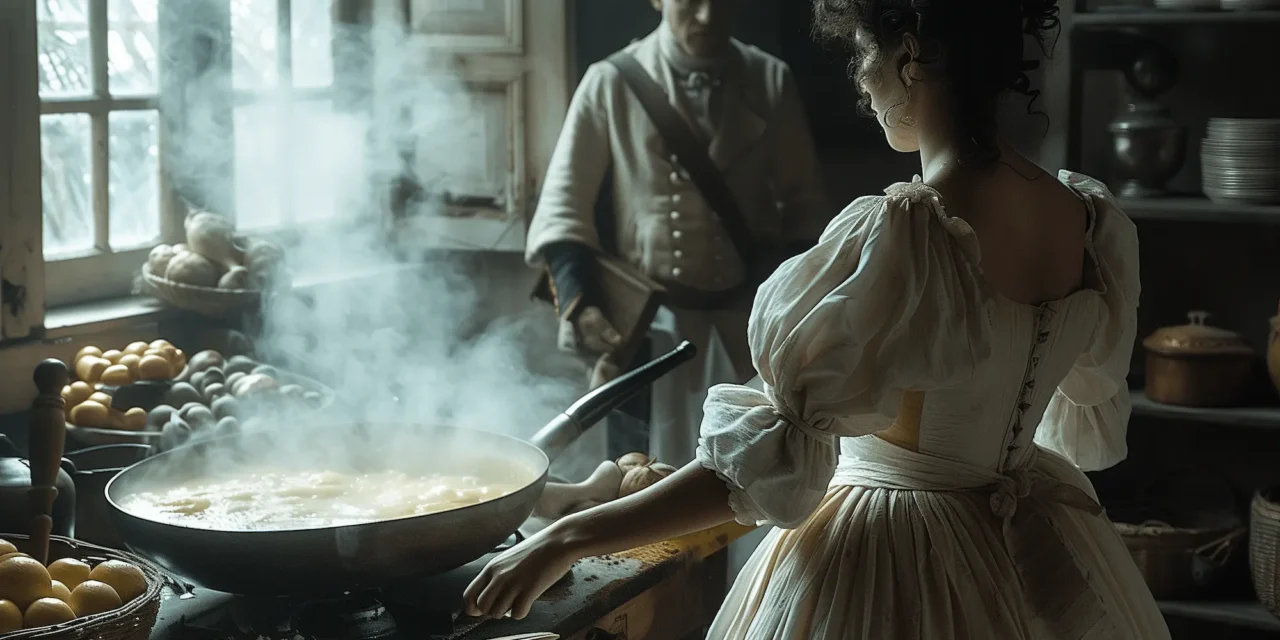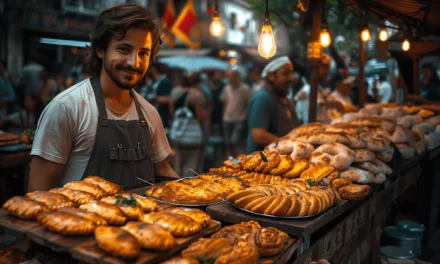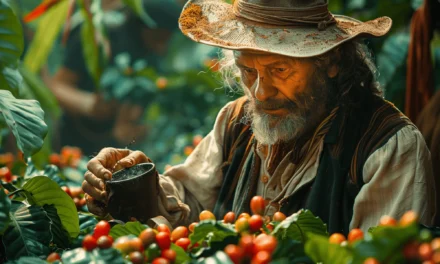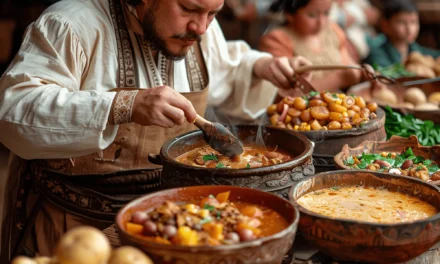The countries of Latin America are duking it out over who gets to lay claim to delicious dulce de leche. And in some cases, they even have a story or legend about the origin. Nevertheless, Milk Caramel is more related to a custom inherited from the colonial period.
This recipe is more likely to come from the Middle East, the Indian Subcontinent, and Asian cultures than from the stories you heard.
There are different names and recipes for “Milk Caramel” in the region; however, the principle is the same: Slowly heat milk and sugar until it turns into a thick, sticky caramel.
Dulce de leche is a delicious, sticky treat that has been enjoyed by people all over the world for centuries. Its rich, sweet flavor is impossible to resist, and its creamy texture is simply heavenly.
Dulce de Leche’s Journey from Asia to Latin America
Latin American countries have disputed the authorship of Milk Caramel, but the sweet and creamy treat originated in Indonesia. Dulce de leche was prepared first in Indonesia and Southeast Asia. It eventually made its way to Latin America, quickly becoming a favorite dessert1.
Dulce de leche was prepared first in Indonesia and Southeast Asia. Contrary to some, Latin American countries did not invent this delicious treat(Llorente, A. (2016, September 26). Dulce de leche, manjar, arequipe o cajeta: ¿de dónde viene el popular dulce? Retrieved from BBC Mundo: https://www.bbc.com/mundo/noticias-37458244)).
It’s believed that milk caramel originated in Asia and spread to the Philippines in the 6th century. This sweet and creamy treat quickly became a favorite among the locals(Llorente, A. (2016, September 26). Dulce de leche, manjar, arequipe o cajeta: ¿de dónde viene el popular dulce? Retrieved from BBC Mundo: https://www.bbc.com/mundo/noticias-37458244)).

During the 16th century, the Spanish conquistadors took control of the Philippines and introduced milk caramel to Mexico. This sweet treat then became increasingly popular in other Spanish colonies(Llorente, A. (2016, September 26). Dulce de leche, manjar, arequipe o cajeta: ¿de dónde viene el popular dulce? Retrieved from BBC Mundo: https://www.bbc.com/mundo/noticias-37458244)).

The rich, sweet flavor was a hit with the locals, and it was soon made all over the place. Today, you can find milk caramel in just about any Spanish-speaking country, and it’s still a popular treat(Llorente, A. (2016, September 26). Dulce de leche, manjar, arequipe o cajeta: ¿de dónde viene el popular dulce? Retrieved from BBC Mundo: https://www.bbc.com/mundo/noticias-37458244)).
Almond Delights: Traditional Recipes from Moorish Spain
In 711, an army of Arab and Berber troops crossed the Strait of Gibraltar and invaded the Iberian Peninsula. The Umayyad conquest of Hispania had far-reaching consequences for Spanish society, culture, and politics. Muslim rule introduced a new religion and culture to the Iberian Peninsula.

With the Umayyad conquest of Hispania in 711, sweet recipes were introduced to the Iberian Peninsula for the first time. These recipes were a delicious addition to the already existing culinary repertoire of the people of the Iberian Peninsula.
It turns out that the people from Al-Andalus were quite the culinary geniuses! Not only did they develop several different cooking techniques, but they also introduced other notable cooking techniques that incorporate almonds. For example, they figured out how to make a dish called “manjar blanco” – a sweet almond pudding2.

A Sweet Spanish Treat: “Manjar Blanco de Gallina”
In seventeenth-century Spain, there was a similarly sweet dish called “manjar blanco de gallina.” It was prepared with cooked and shredded chicken breast that was kept with milk, ground rice, and sugar over low heat while continuously stirring. The recipe was flavored with orange blossom water2.
We can find a reference to these recipes in the Book of the Art of the Kitchen (1607) by Domingo Hernández de Maceras. They recommended pouring this delicacy into “bowls” for consumption during parties2.
Xavier Domingo also describes a sweet made with almond milk and sugar: milk that, after several “strong boils, it will be so thick that, when cooling, it can be called a white delicacy” (1981: 117).
The noblewoman, with a wealthy table, had chicken breasts, almond milk, and sugar. The “manjar blanco” of the poor was with other parts of the chicken. Both “manjar blanco” versions arrived in Latin America, where cow’s milk and rice flour replaced almond milk2.

The Art of Making Manjar Blanco: A Delightful Staple of Latin American Cuisine
Latin American kitchens adopted this long process during the colonial period, becoming a staple in many regional dishes. While making it may take some time, the end result is always worth the effort3.
Making manjar blanco is a bit of a process, but it’s worth it in the end! You start by cooking milk and sugar over low heat until it thickens and forms a sticky, white paste. This paste is then used to fill and flavor cakes, pastries, and other desserts. It’s a delicious way to add a little something extra to your baking!3
The enslaved people and their descendants developed “manjar blanco” as many other sweet recipes from Latin America3.

The milk mistakes of Argentinian history: How dulce de leche was born by accident
Some say that milk caramel originated in South America. Chile, Peru, Uruguay, and Argentina, among others, dispute the creation of “dulce de leche.”4
The Buenos Aires oral tradition tells that this delicacy was created by chance on June 24, 1829, in the La Caledonia ranch, where the “Pact of Cañuelas” between Juan Manuel de Rosas, head of the federal forces, and the commander of the unitary army, Juan Lavalle4.
According to this story, a maid was preparing the milk (sugary hot milk with which Rosas drank mate). When Lavalle arrived, tired from the journey, he lay down on Rosas’s cot. The maid, who went to bring him a mate, found the enemy chief in his place and then ran in search of the guard. The milk left transformed into the caramelized mixture we all know today as “dulce de leche.”4

- Llorente, A. (2016, September 26). Dulce de leche, manjar, arequipe o cajeta: ¿de dónde viene el popular dulce? Retrieved from BBC Mundo: https://www.bbc.com/mundo/noticias-37458244[↩]
- Patiño Ossa, G. (2012). Fogón de negros, cocina y cultura en una región latinoamericana. Retrieved from Biblioteca básica de Cocinas Tradicionales de Colombia: https://www.mincultura.gov.co/Sitios/patrimonio/bibliotecas-de-cocinas/tomos/tomo08.pdf[↩][↩][↩][↩]
- Garcés Arellano, M. A., & Barney Cabrera, E. (2012). Con cagüinga y con callana. Notas y apostillas al margen de un libro de cocina. Retrieved from Biblioteca básica de Cocinas Tradicionales de Colombia: http://patrimonio.mincultura.gov.co/SiteAssets/Paginas/Publicaciones-biblioteca-cocinas/biblioteca%203.pdf[↩][↩][↩]
- Gamarra, M. L., & Ferro, M. (2011). Sabores de Buenos Aires: De las sierras al puerto rescatando lo autóctono desde la historia familiar. Buenos Aires: Ministerio de Desarrollo Social – Argentina.[↩][↩][↩]




